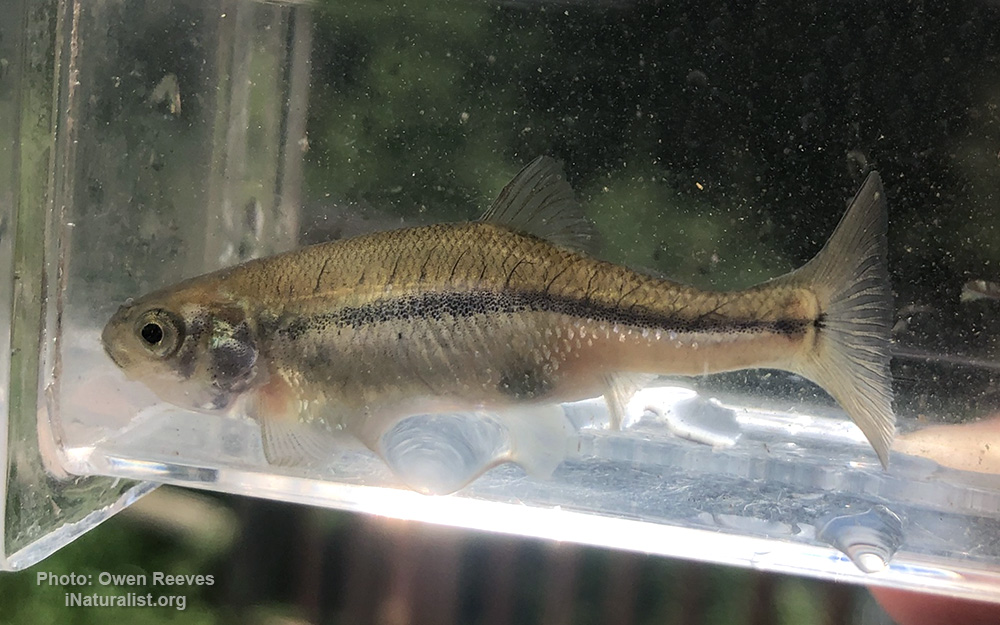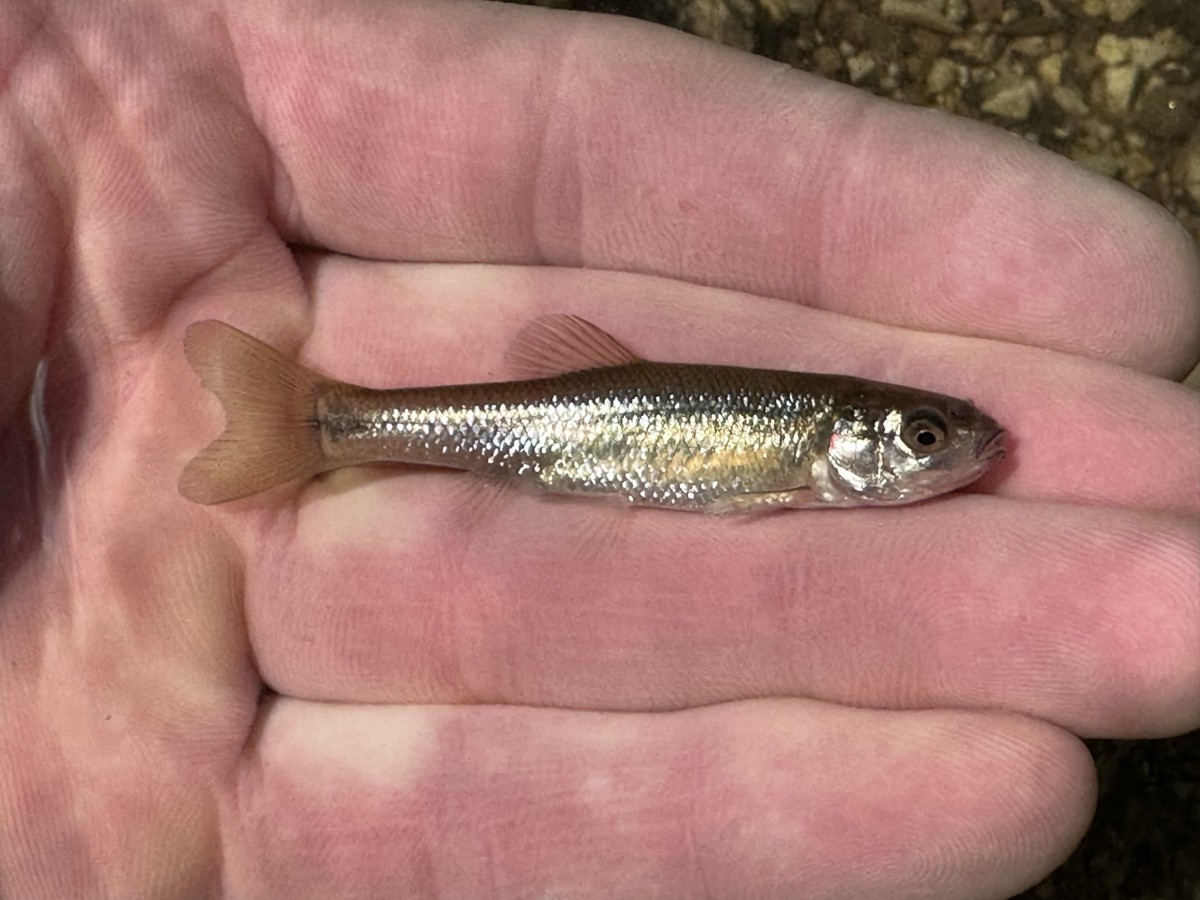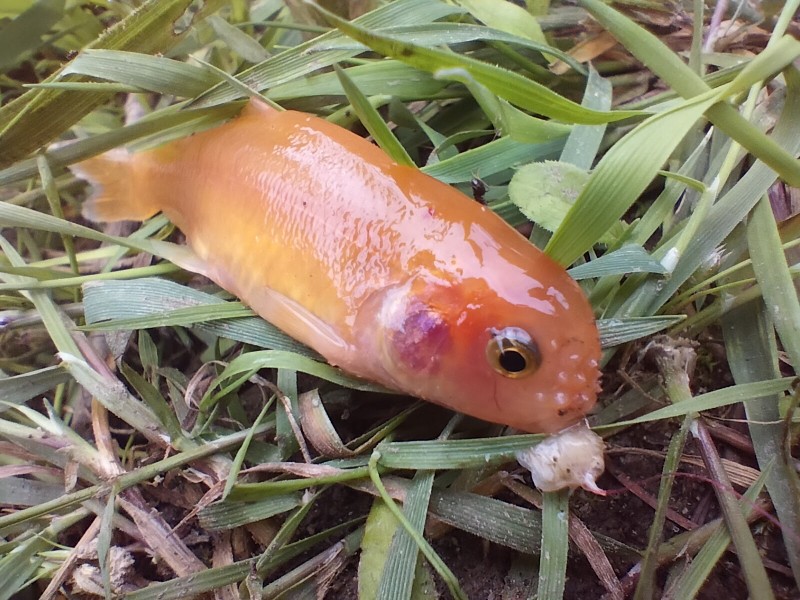Fathead minnow
(Pimephales promelas)

Classification
General data
Fathead minnow (Pimephales promelas), also known as fathead or tuffy, is a species of temperate freshwater fish belonging to the genus Pimephales of the cyprinid family.
The natural geographic range extends throughout much of North America, from central Canada south along the Rockies to Texas, and east to Virginia and the Northeastern United States.
This minnow has also been introduced to many other areas via bait bucket releases. Its golden, or xanthic, strain, known as the rosy-red minnow, is a very common feeder fish sold in the United States and Canada. This fish is best known for producing Schreckstoff (a distress signal).
The fathead minnow in its wild form is generally dull olive-grey in appearance, with a dusky stripe extending along the back and side, and a lighter belly. There is a dusky blotch midway on the dorsal fin.
Breeding males acquire a large, grey fleshy growth on the nape, as well as approximately 16 white breeding tubercles on the snout.
Typical total lengths are between 7 and 10 cm
Fathead minnows are distributed across North America from Chihuahua, Mexico, north to the Maritime Provinces and Great Slave Lake drainage of Canada and have been introduced to Atlantic and Pacific coastal drainage basins in the United States. Their tolerance for multiple environmental conditions, characteristics of their life history, and their popularity as bait species contribute to their widespread distribution. The fathead minnow is quite tolerant of turbid, low-oxygen water and can most commonly be found in small lakes, ponds, and wetlands. They can also be found in larger lakes, streams, and other habitats, as well.














